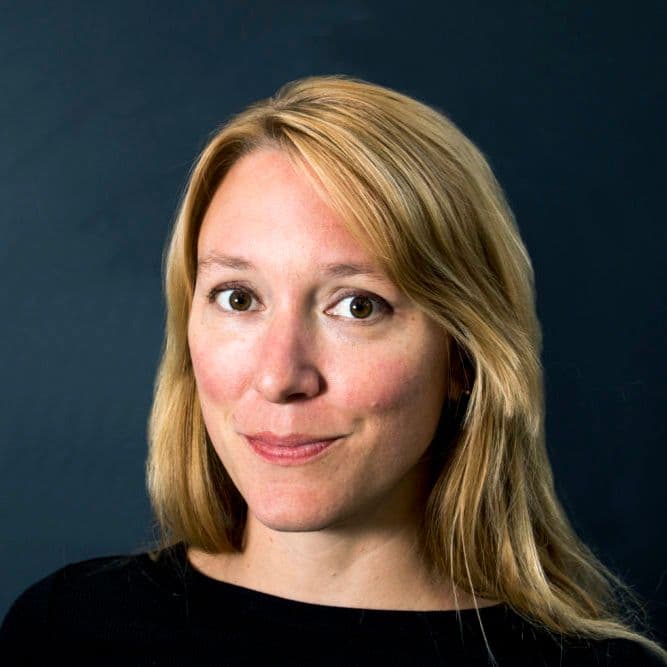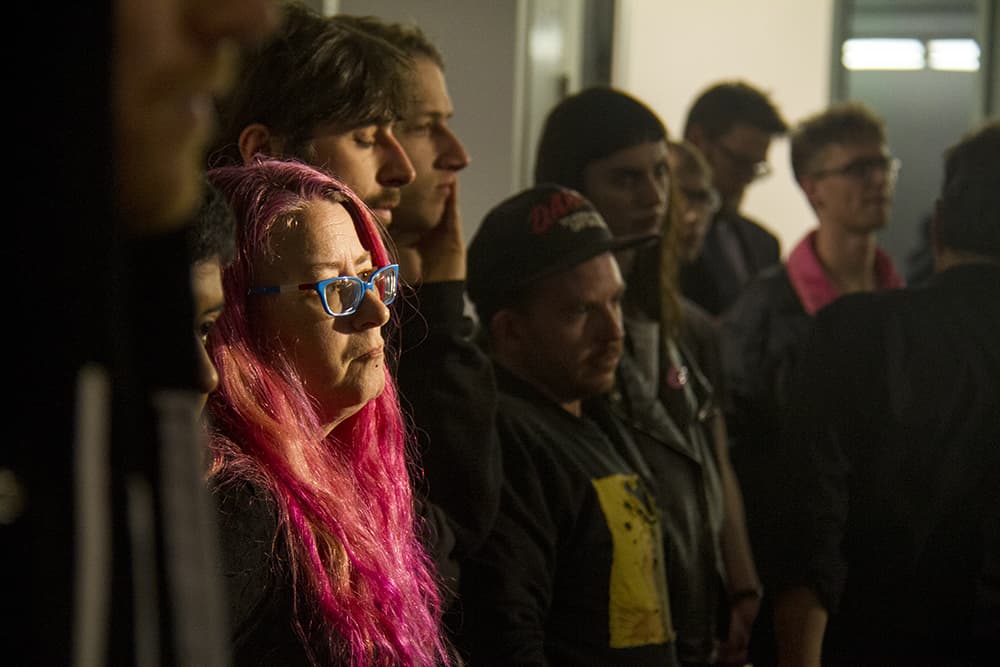
When city officials and local artists got into a room to discuss the safety and future of Denver's art spaces, it was bound to get tense and emotional.
Representatives from Denver Fire, Arts & Venues and Community Planning and Development addressed hundreds of people during the forum for safe creative spaces Wednesday night at the McNichols Building. At least five of those people run DIY art spaces in Denver and many, many more -- clad in all black for the meeting -- identified themselves as local artists.
The assembled panel reviewed the sequence of events that led to the shutdown of DIY live-work spaces Rhinoceropolis and Glob, reiterating that they are not targeting artists, that they act in the interest of protecting lives and that they have no choice but to inspect when a building is reported. They also went over zoning and permit information, more of which was available in detail in handouts and at tables around the room.
It was largely information we've heard before, but for three things:
- Denver Arts & Venues has committed $20,000 to be put toward safe creative spaces and supporting artists.
- Minneapolis-based nonprofit developer Artspace has begun to plan 100 units of artist housing in Denver.
- RiNo Art District is pushing the city to let the district keep two buildings that will eventually become part of RiNo Park and use them as permanent, affordable creative space.
Update: Meow Wolf — a well-known DIY space in Santa Fe — has announced that it will match the city's $20,000 with a $20,000 donation specifically for Rhinoceropolis and Glob.
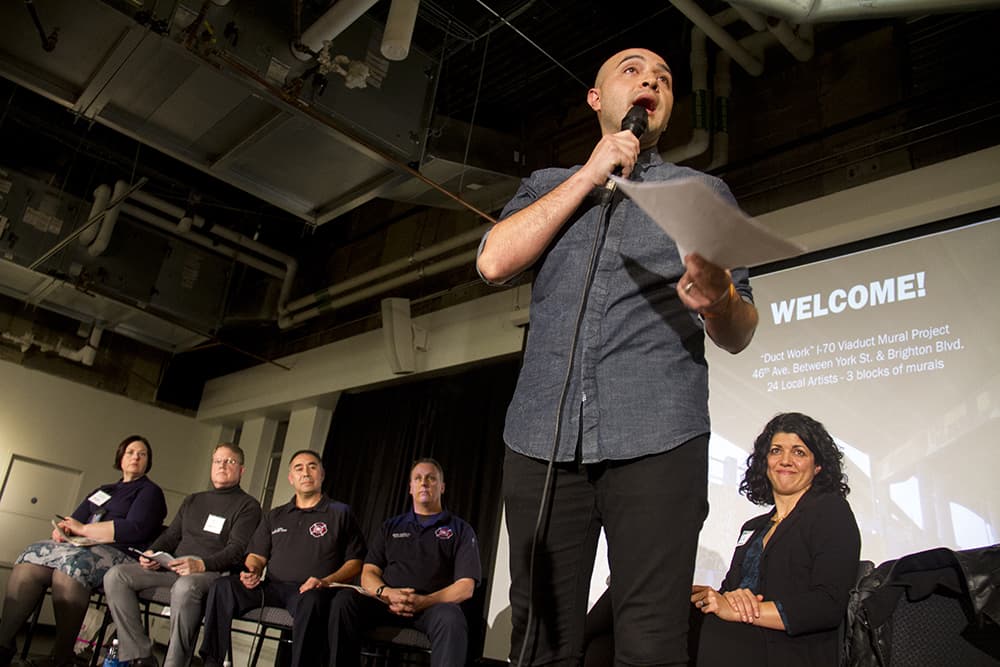
Let's start with that $20K.
Right now, the total and the general purpose are about all that is concrete.
"We haven’t decided [where the money will go yet] because we wanted to hear the ideas from the community tonight as well as as we formulate different strategies going forward, looking at what other cities are doing to see where it’s best to invest those dollars,” Ginger White, director of Arts & Venues told Denverite after the forum.
“We certainly want to make sure that we're using those funds responsibly," she added. "So while we haven’t ruled anything out, we think we have to be thoughtful about how do we spend city dollars without subsidizing what a property owner should be doing ... What’s that sweet spot that makes sense?”
Arts & Venues is working with Artspace, but this money won't be tied to that project, which is further down the road. The city is looking for short- and mid-term solutions.
“There’s no silver bullet here. One hundred units of live-work space is not going to solve this issue, but it’s, I think, an important tool that we don’t currently have," White said.
Those 100 units are a few years away.
Shannon Joern, senior director of national advancement for Artspace, came to the city's forum prepared with stacks of brochures, pamphlets, booklets and packets (and, yes, each of those things is different).
According to the pamphlet, the nonprofit developer has more than 40 projects in operation, more than 10 projects in development and more than 275 consulting projects. They're in cities from coast to cost, north to south.
In Loveland, Artspace built 30 units of affordable live-work space. Right next door, the Loveland Feed & Grain Building was converted into community space, artist studios and space for creative businesses. The estimated cost was $8.9 million.
Denver's Artspace is probably two to three years from opening, Joern said. Right now, they're in the early phase of pre-development, focusing on real estate and financing. Construction will likely begin in 2018.
Meanwhile, RiNo Art District is collecting petition signatures.
Tomorrow, the board will present a letter to Mayor Michael Hancock asking that the city seriously consider an offer for two buildings in the district that will become part of RiNo Park: the EEB Building at 35th Street and Arkins Court and the Interstate Building.
It reads, in part:
Then, a few months ago, word got out that the City was undertaking a "market study" of the buildings to determine their financial feasibility. All the while, RiNo has had an offer on the table to take over the buildings, fund their redevelopment and take on their management, at no cost to the city.
Now, with all these other issues around affordability looming, we are asking as a community, for the City to stop looking towards studies and hoping for commercial success in these buildings, and come to the table with us to give these buildings a future that's appropriate -- as a permanent, affordable creative community space for the neighborhood.
Jamie Licko, executive director of the RiNo Art District, said the buildings present an opportunity for the city to work in partnership with the arts community. "Now is the time to make that happen."
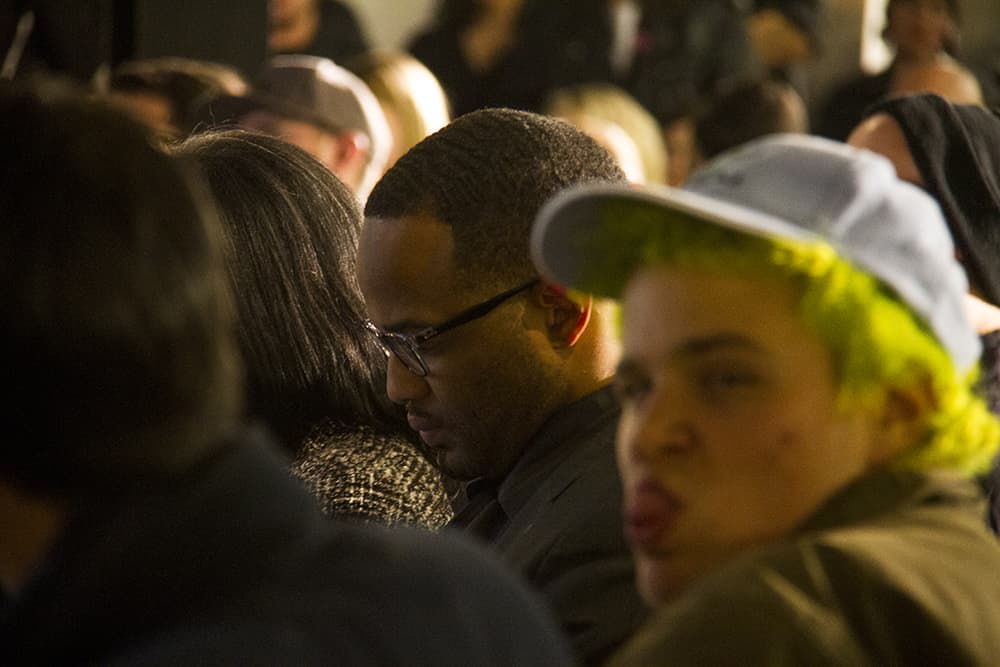
But unless artists took the time to visit each table at the forum, they've missed most of this.
Much of what was talked about during the forum itself was fire and building code. Mark Rudolph, the Denver Fire inspector who made the call to close Rhinoceropolis and Glob explained his decision.
"At the end of the night, I have to go home knowing that you all are safe, and that's a responsibility I take seriously," he said.
Assistant chief Jeremy Vigil, CPD building official Scott Prisco and CPD deputy director Jill Jennings Golich all went over building safety, public safety protocol and resources for property owners.
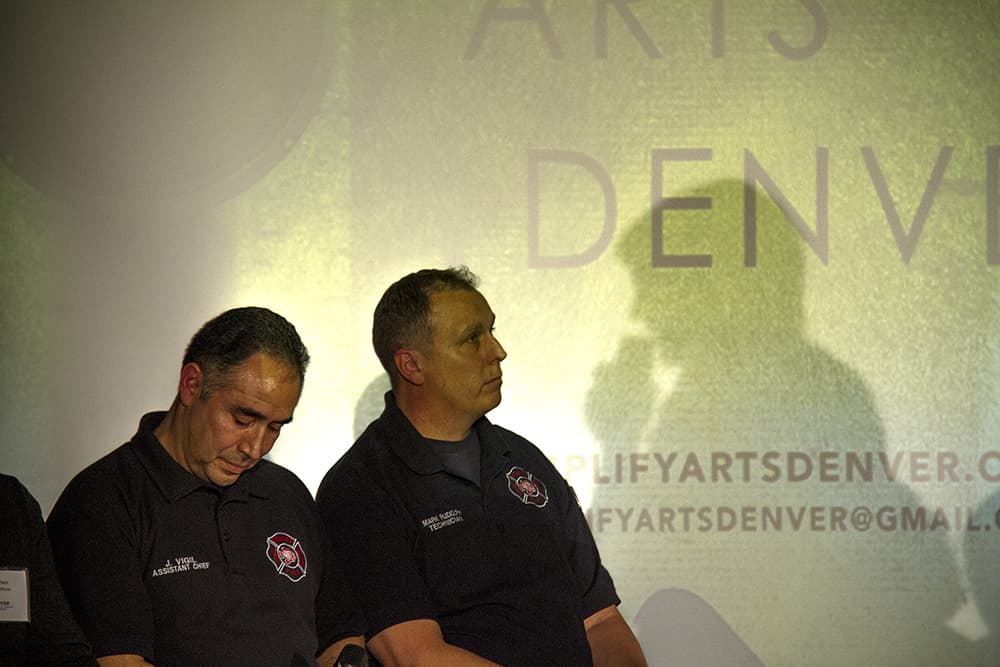
The artists and arts advocates in attendance were not satisfied. As the Q&A portion of the night began, at least a dozen of them lined up to let the panel know. After a brief, two-man performance of what is most easily described as a noise performance, a young woman approached a mic to tell the city, "I think what we're hearing is 'money.'"
Much of the comment that followed supported her point: many artists can't afford to make the fixes the city is asking them to make.
"Do something to help us, don't tell us what to do," another woman said.
Writer and performer Bobby LeFebre, who was the sole artist on the panel, acted as both moderator and, in essence a translator, boiling down emotional testimony.
After a woman said that the people who made RiNo what it is are now being pushed out, he concluded, "If artists can't live in these art districts, then it's nothing more than fancy talk."

The Q&A lacked in both Qs and As, and artists were left feeling frustrated.
"We wanted to be there and we didn't just want to be in the audience, we wanted to be on the stage," said Bree Davies, a co-founder of Titwrench Collective, Westword columnist and DIY advocate there to represent Amplify Arts Denver. "The closures of our spaces have felt very personal and the response so far has felt very impersonal."
The next steps for the fledging group, Davies said, are to figure out what resources they have and what they need.
Amplify is only a few weeks old, but it's already serving a important purpose: organizing a DIY arts scene. The community is tight-knit, but it's never been in the nature of DIY to have board, a district or any kind of organized representation.
Facing the city Wednesday night, Amplify member and former Rhinoceropolis resident Madeline Johnston, said, "We feel this is an issue that is directly about us and our community and we're not being invited to the discussion ... We want a seat at the table."
In a statement released by Amplify Arts just an hour after the forum, Amplify member Lauri Lynnxe Murphy said, “That’s not what we saw here tonight. The city basically held a meeting to restate its broken status quo. They wouldn’t take our questions and refused to allot us reasonable space for comment. This was nothing but a publicity stunt to improve the city’s image after they kicked us out of our homes.”
The release also points to Oakland, where 36 people died in a fire at Ghost Ship, as an example for how a city can move forward. There, Mayor Libby Schaaf announced a $1.7 million investment to “support sustainable, long-term solutions to creating affordable, safe spaces" and, according to this release, the city requires officials to work with residents to get their spaces up to code in a cooperative and unobtrusive way.
